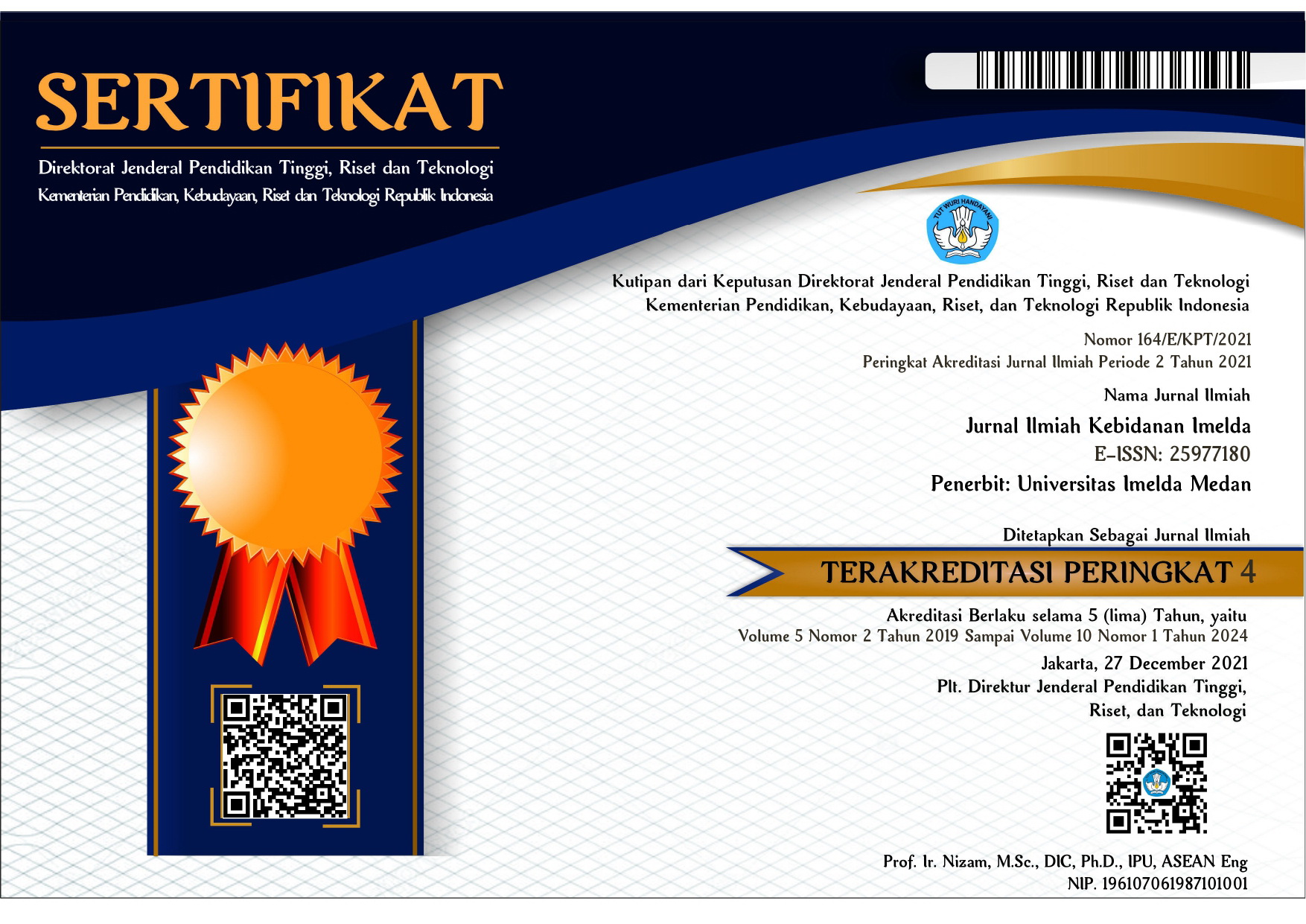PENGARUH PENGGUNAAN TEKNIK VISUALISASI TERHADAP PENINGKATAN PERSEPSI IBU TENTANG PEMENUHAN GIZI ANAK DALAM PENCEGAHAN STUNTING
Keywords:
Visualisation techniques, Maternal perception, Child nutrition, Stunting prevention, Nutrition educationAbstract
Background: Stunting remains a major public health problem in low- and middle-income countries, including Indonesia, where maternal age, education, knowledge, and perception play pivotal roles in child nutrition and growth outcomes. Objective: This study aimed to assess maternal characteristics, knowledge, and perceptions related to breastfeeding and nutrition, and to evaluate the effect of visualization techniques on improving maternal perception of child nutrition in the prevention of stunting. Methods: A cross-sectional design was applied involving 100 mothers as respondents. Data were collected on maternal age, education, employment status, knowledge of breastfeeding and stunting, and perception of child nutrition. An intervention using visualization techniques was conducted, and its effect on maternal perception was analyzed using chi-square tests and risk estimates with 95% confidence intervals. Results: Nearly half of the respondents were adolescent mothers (<18 years, 48%), while 45% had only basic education. A majority of mothers demonstrated good knowledge about breastfeeding and stunting (68%) and positive perceptions of nutrition (65%). However, knowledge and perception gaps remained among those with lower education. The use of visualization techniques significantly improved maternal perception of nutrition (p = 0.003), with mothers in the intervention group being four times more likely to report good perception compared to controls (OR = 4.0; 95% CI: 1.647–9.715). Conclusion: Maternal characteristics, particularly young age and low educational attainment, remain challenges for effective stunting prevention. Visualization-based education is an effective strategy to improve maternal perception and should be integrated into community health programs. Strengthening maternal nutrition literacy through innovative, accessible, and interactive interventions is essential to reduce stunting prevalence.
References
X. S. Li, et al., "Analysis and Simplification of Three-Dimensional Space Vector PWM for Three-Phase Four-Leg Inverters," IEEE Transactions on Industrial Electronics, vol. 58, pp. 450-464, Feb 2011.
WHO. (2020). "Stunting in Children." Diakses dari https://www.who.int/newsroom/ fact-sheets/detail/stunting 2. Kemenkes. Hasil Survei Status Gizi Indonesia (SSGI) 2022. Kemenkes. 2023. 154 p.
Usman, R., Hasyim, M., & Kurniawan, D. (2022). "The Role of Maternal Knowledge and Socioeconomic Factors in Preventing Stunting in Children Under Five Years Old." International Journal of Public Health Science, 11(1), 45-54. https://doi.org/10.11591/ijphs.v11i1.20438
Mohammad, A., Alshahrani, H., & Kharoshah, M. A. (2021). "The Effectiveness of Visualization Techniques in Enhancing Knowledge and Attitude towards Healthy Eating Practices among Youth: A Systematic Review." Nutrition and Food Science, 51(2), 245-259. https://doi.org/10.1108/NFS-05-2020-0060
Dewi, T., Siswati, R., & Maulida, I. (2021). "Understanding Mothers’ Knowledge and Attitude Towards Child Nutrition: A Mixed-Methods Study." Journal of Nutrition Education and Behavior, 53(2), 195-203. https://doi.org/10.1016/j.jneb.2020.09.001
Mohammad A, Rahman S, Ferdous J, Nahar N. Effectiveness of visual communication materials in improving maternal knowledge on child nutrition: Evidence from a quasi-experimental study. J Nutr Educ Behav. 2021;53(7):560–8. doi: 10.1016/j.jneb.2021.03.004
Smith JP, Ingham-Broomfield R. Mothers’ employment and the impact on family health. J Fam Stud. 2019;25(1):45–59.
Oddo VM, Ickes SB. Maternal employment in low- and middle-income countries is associated with improved infant and young child feeding. Am J Clin Nutr. 2018;107(3):335–44. doi:10.1093/ajcn/nqy001
Kavle JA, LaCroix E, Dau H, Engmann C. Addressing barriers to exclusive breast-feeding in low- and middle-income countries: a systematic review and programmatic implications. Public Health Nutr. 2017;20(17):3120–34. doi:10.1017/S1368980017001230
Lestari W, Margawati A, Rahfiludin MZ. Factors associated with stunting among children aged 6–23 months in South Lampung, Indonesia. BMC Public Health. 2018;18:611. doi:10.1186/s12889-018-5550-9
de Onis M, Branca F. Childhood stunting: a global perspective. Matern Child Nutr. 2016;12(Suppl 1):12–26. doi:10.1111/mcn.12231









